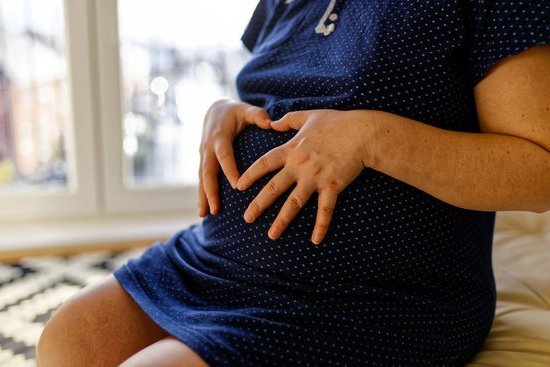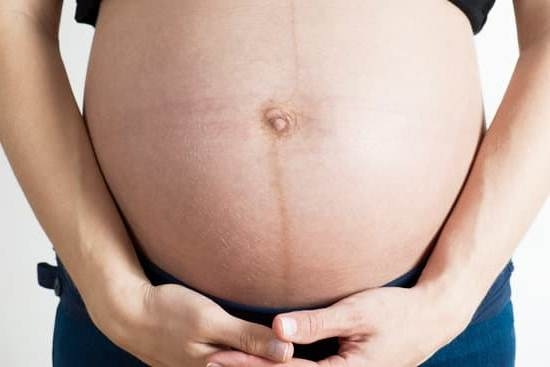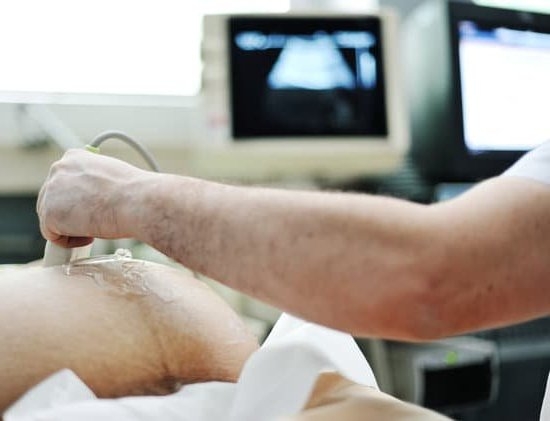Discovering if you are pregnant is an important step in your journey towards motherhood. It is crucial to know how soon to test for pregnancy to ensure accurate results and take necessary actions promptly. Early pregnancy detection can provide you with the information you need to make informed decisions about your health and well-being.
Recognizing the signs and symptoms of early pregnancy can help you determine when it may be time to take a pregnancy test. From missed periods to morning sickness, understanding what to look out for can aid in early detection and timely confirmation of your pregnancy status. By being aware of these indicators, you can be more prepared for the next steps in your journey.
There are various types of pregnancy tests available in the market, each with its own set of pros and cons. From home pregnancy tests to blood tests conducted at healthcare facilities, knowing which option suits your needs best is essential. This article will delve into the different testing methods, providing you with valuable insights on how each one works and the factors to consider before deciding on a specific approach.
Signs and Symptoms of Early Pregnancy
During the early stages of pregnancy, many women may experience a range of signs and symptoms that can indicate they are expecting. One of the most common early signs is a missed period, although some women may still experience light bleeding or spotting known as implantation bleeding. Other physical changes such as breast tenderness, fatigue, nausea, increased urination, and mood swings can also be early indicators of pregnancy.
Physical Changes
Aside from missed periods and implantation bleeding, physical changes in the body can provide clues about early pregnancy. Some women may notice that their breasts feel more tender or swollen than usual. Nausea or morning sickness may also make an appearance in the early weeks of pregnancy, making certain foods or smells unappealing. Increased frequency of urination is another common symptom due to hormonal changes affecting the kidneys.
Emotional Symptoms
In addition to physical changes, emotional symptoms can also play a role in early pregnancy detection. Mood swings are quite common in pregnant women due to fluctuating hormones. Some women may also experience heightened emotions, whether it be feelings of happiness and excitement about the potential pregnancy or anxiety and fear about what lies ahead. It’s essential to pay attention not only to physical symptoms but also to any emotional changes that may signal early pregnancy.
Overall, being aware of both physical and emotional signs and symptoms of early pregnancy is crucial for those wondering how soon to test for pregnancy. While these indicators can vary from woman to woman and even from one pregnancy to another, recognizing these potential signals can help individuals decide when it may be appropriate to take a home pregnancy test for confirmation.
Different Types of Pregnancy Tests Available
When it comes to testing for pregnancy, there are various types of tests available on the market. Each type has its own set of pros and cons that should be taken into consideration before deciding which one to use. Here is a breakdown of the different types of pregnancy tests available:
- Home Pregnancy Tests: Home pregnancy tests are convenient, affordable, and can be done in the privacy of your own home. They work by detecting the presence of hCG (human chorionic gonadotropin) in your urine. However, it is important to follow the instructions carefully and wait for the recommended time frame to get accurate results.
- Blood Pregnancy Tests: Blood pregnancy tests are conducted at a healthcare provider’s office and can detect pregnancy earlier than urine tests. These tests measure the levels of hCG in your blood, providing more accurate results. However, they are more expensive and may require a visit to a healthcare facility.
- Early Detection Pregnancy Tests: Some home pregnancy tests are designed to detect pregnancy even before you miss your period. These tests claim to provide results as early as 6-8 days after conception. While they offer early detection, they may not always be as accurate as waiting until after a missed period.
It is essential to weigh the pros and cons of each type of pregnancy test before making a decision on which one to use. Factors such as cost, convenience, accuracy, and timing should all be considered when choosing a test. Additionally, consulting with a healthcare provider can help determine which type of pregnancy test may be best suited for your individual needs.
How a Home Pregnancy Test Works
When it comes to figuring out if you are pregnant, a home pregnancy test can provide quick and convenient results. These tests work by detecting the presence of a hormone called human chorionic gonadotropin (hCG) in your urine, which is only present when you are pregnant. Here is a step-by-step guide on how to use a home pregnancy test:
- Read the instructions: Before taking the test, carefully read the instructions provided with the kit. Make sure you understand how to use the test properly.
- Collect urine sample: Most home pregnancy tests require you to collect your urine in a clean cup. Alternatively, some tests allow you to hold the stick directly in your urine stream for a few seconds.
- Perform the test: Dip the testing stick into the collected urine or hold it in your urine stream according to the instructions. Wait for the specified amount of time for results to appear.
- Interpret results: After waiting for the designated time, check the display window on the test stick for results. A positive result will typically show up as two lines or a plus sign, while a negative result will show one line or a minus sign.
It’s important to note that different brands of home pregnancy tests may have slightly different instructions, so make sure to follow them carefully for accurate results. Additionally, it is recommended to take the test first thing in the morning when your urine is most concentrated for best accuracy.
With technology advancements, some modern home pregnancy tests also come with digital displays that clearly state “Pregnant” or “Not Pregnant” for easier interpretation. These digital tests may be more expensive than traditional line-based tests but can provide clearer results without any confusion.
Overall, using a home pregnancy test can provide women with valuable information about their potential pregnancy status in the comfort and privacy of their own homes. Remember that it’s essential to follow manufacturer instructions closely and consider factors like timing and accuracy when deciding when and how soon to test for pregnancy.
Factors to Consider Before Taking a Pregnancy Test
Age and Health History
Before taking a pregnancy test, it is essential to consider your age and health history. Younger women may have irregular periods, which can affect the accuracy of the test. Additionally, certain medical conditions or medications can also impact the results of a pregnancy test. It is important to consult with a healthcare provider if you have any concerns about how these factors may affect your test results.
Timing of Intercourse
Another factor to consider before taking a pregnancy test is the timing of intercourse. Pregnancy tests detect the presence of hCG hormone in urine, which is usually produced after implantation occurs. It is recommended to wait at least one week after a missed period to take a pregnancy test for accurate results. If you suspect you may be pregnant, tracking your ovulation and knowing when you had unprotected intercourse can help determine the best time to take a test.
Emotional Readiness
Emotional readiness is also an important factor to consider before taking a pregnancy test. A positive result can bring about various emotions such as joy, excitement, or anxiety. On the other hand, a negative result can be disappointing for some individuals. Before taking a pregnancy test, it is crucial to assess your emotional readiness for either outcome and have support systems in place to cope with the results.
Considering these factors before taking a pregnancy test can help prepare you for what lies ahead and ensure that you are making an informed decision. Remember that each person’s situation is unique, so it’s important to take into account all aspects before proceeding with testing for pregnancy.
When to Take a Pregnancy Test After Conception
After conception, the timing of when to take a pregnancy test is crucial in getting accurate results. Many women may be eager to find out if they are pregnant as soon as possible, but taking a test too early can lead to false negatives. It is important to understand that the human chorionic gonadotropin (hCG) hormone, which is produced during pregnancy, takes time to build up in the body and be detected by a pregnancy test.
Typically, most home pregnancy tests claim to detect hCG levels in urine around the time of your missed period. However, for more accurate results, it is recommended to wait at least one week after your missed period before taking a test. This allows enough time for the hCG hormone to reach detectable levels in your system. Taking a test too early can result in receiving a false negative even though you may indeed be pregnant.
In some cases, women may experience implantation bleeding – light spotting that occurs when the fertilized egg attaches itself to the uterus lining – around 6-12 days after conception. If this occurs, you may mistake it for a light period and not realize you are pregnant until later on.
Therefore, if you suspect you might be pregnant and experience any early signs or symptoms such as fatigue, nausea, breast tenderness, or frequent urination, it may be worth waiting a few more days before taking a home pregnancy test to allow for accurate detection of hCG levels in your urine.
False Positives and Negatives
False positive and negative results in pregnancy tests can be quite confusing and stressful for individuals trying to conceive. It is essential to understand the reasons behind these misleading outcomes to avoid unnecessary worry or misinterpretation.
A false positive result occurs when a pregnancy test shows a positive result when, in fact, the individual is not pregnant. This can happen due to various reasons such as an expired or faulty pregnancy test kit, certain medications interfering with the results, or underlying medical conditions like ovarian cysts.
On the other hand, a false negative result happens when a test indicates a negative result despite the individual being pregnant. This could occur if testing too early before there is enough hCG hormone in the urine, using diluted urine, or issues with the testing process itself.
One of the best ways to reduce the chances of false results is to carefully follow the instructions provided with the pregnancy test kit. Additionally, it is advisable to confirm any unexpected results with a follow-up test or consult with a healthcare provider for further evaluation. Understanding that both false positives and negatives can happen will help individuals navigate through the emotional rollercoaster of waiting for accurate results and planning their next step accordingly.
| Common Causes | Prevention |
|---|---|
| Expired or faulty pregnancy test kits | Check expiration dates and store properly |
| Certain medications affecting results | Consult doctor about medication interactions |
| Testing too early before sufficient hCG levels | Wait for recommended time to test after conception |
Next Steps After a Positive Pregnancy Test
When a woman receives a positive result on a pregnancy test, it can be an exciting and sometimes overwhelming time. One of the first steps to take after getting a positive pregnancy test is to schedule an appointment with a healthcare provider. This is important for confirming the pregnancy and starting prenatal care as soon as possible. Prenatal care is crucial for ensuring both the mother and baby’s health throughout pregnancy.
Once the pregnancy has been confirmed by a healthcare provider, there are several key steps that a woman can take to ensure a healthy pregnancy. This includes discussing any pre-existing medical conditions or medications with her healthcare provider, making necessary lifestyle changes such as quitting smoking or drinking alcohol, and starting to take prenatal vitamins with folic acid. Additionally, it is essential to maintain regular check-ups and follow the advice of the healthcare provider throughout the pregnancy.
For women who have received a positive result on a pregnancy test but were not planning on becoming pregnant, it is important to seek support from loved ones or counseling services. It can be helpful to discuss feelings and emotions surrounding the unexpected pregnancy with someone trusted or seek professional help if needed. Regardless of the circumstances, finding emotional support during this time can make a significant difference in coping with the changes ahead.
| Positive Pregnancy Test Next Steps | What to Do |
|---|---|
| Schedule an appointment with healthcare provider | Confirm pregnancy and start prenatal care |
| Discuss medical history and medications with healthcare provider | Make necessary lifestyle changes for healthy pregnancy |
| Seek emotional support if needed | Talk to loved ones or consider professional counseling |
Conclusion
In conclusion, empowering women with knowledge about early pregnancy testing opportunities is crucial in ensuring their reproductive health and overall well-being. Understanding the signs and symptoms of early pregnancy, different types of pregnancy tests available, and factors to consider before taking a test are key in making informed decisions about one’s fertility. By being equipped with the necessary information, women can take control of their reproductive health and make timely decisions that are best for them.
One important aspect to consider is when to take a pregnancy test after conception. Timing is key in obtaining accurate results, as testing too early may result in false negatives. It is recommended to wait at least a week after a missed period or follow the instructions on the specific pregnancy test for optimal accuracy. By understanding the timing factor, women can ensure that they receive reliable results from their tests.
Overall, whether experiencing a positive or negative result, it is essential for women to seek appropriate follow-up care. False positives and negatives can occur, so it is important to consult with a healthcare provider if there are any doubts or concerns about the test results. By staying informed and proactive about early pregnancy testing opportunities, women can take charge of their reproductive health journey and make decisions that best suit their needs and goals.
Frequently Asked Questions
How Soon Will a Pregnancy Test Read Positive?
A pregnancy test can read positive as early as 8-10 days after ovulation. However, for best accuracy, it is recommended to wait until you have missed your period before taking a test.
What Are the 1 Week Symptoms of Pregnancy?
During the first week of pregnancy, symptoms may not be very noticeable. Some women may experience mild cramping or spotting, breast tenderness, fatigue, or mood swings. These symptoms can vary greatly from person to person.
How Soon After Unprotected Can I Test for Pregnancy?
It is possible to test for pregnancy as soon as 7-10 days after having unprotected sex, depending on when ovulation occurs and when implantation happens. However, for the most accurate results, it is advisable to wait until you have missed your period before testing.

Welcome to my fertility blog. This is a space where I will be sharing my experiences as I navigate through the world of fertility treatments, as well as provide information and resources about fertility and pregnancy.





